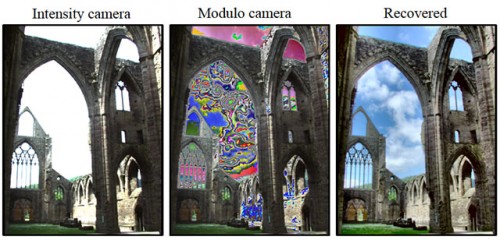MIT researchers have developed a camera that will never overexpose an image
The folks at MIT have designed a new camera that will never overexpose a photograph, no matter what the lighting situation is. Called a “modulo camera,” it captures a high dynamic range photo with every exposure.
Trying to take pictures in the dark or through a window is difficult for professional photographers and everyday people alike. A group of researchers at MIT have proposed a camera that can take a perfect picture, no matter what the lighting contrast is. Called a “modulo camera,” this camera is designed to never overexpose an image, enabling high dynamic range photography. This achievement was awarded the best paper runner-up at the 2015 International Conference on Computational Photography.

High dynamic range (HDR) imaging is a method that allows both very bright and very dim light sources to be pictured in a single image with no loss in quality. HDR cameras have been created before, but conventional HDR cameras use multiple normal images to create one final HDR image. This means that if the camera is shaking, or if the image is of a moving target, the HDR technique does not work. However, the modulo camera, created in a collaboration between the Media Lab’s Camera Culture group, MIT Lincoln Lab, and Singapore University of Technology and Design, only requires one shot to create an HDR image. This not only allows HDR photos to be taken free of blur, but also allows for the possibility of HDR video.


Conventional camera sensors will get “full,” or saturated, after receiving an excess amount of light. This is because conventional camera sensors have a limited “well capacity,” or a limited amount of light the sensors can take in before they overflow. The modulo camera solves the saturation problem by resetting the sensor capacitors whenever the “well” gets full, and uses an inverse modulo algorithm to calculate how much light the reset sensors took in. This algorithm recovers a much larger dynamic range. For example, if a certain camera sensor can record eight bits of information, then when those eight bits are filled, the capacitor will be reset to zero. The number of resets is recovered by the algorithm, which then calculates the relative brightness of each area of the photo.
There are numerous uses for this technology. No more will photographers or even ordinary people have to fumble with aperture size and exposure length. The algorithm would enable people simply to click the camera button and let the computer deal with exposure problems. The modulo camera can potentially transform the way everyday photography works.
Here’s a short video explanation how the modulo camera works
Furthermore, cameras serve as visual input for robots. Clarity in all lighting conditions is crucial to robotic vision. However, good lighting cannot always be guaranteed. When a driverless car drives into a tunnel, an ordinary camera goes blind: the exit ahead is bright, and the surroundings are dark, so the camera cannot see both inside the tunnel and out of it. A real-time HDR camera could guarantee safety in these conditions. The list of real-world applications goes on: laser image speckling, astronomy, and any field that deals with sources of both bright and low light could be transformed by the modulo camera technology.
[MIT]

 © 2015 Copyright ShootTheCenterfold.com. All rights reserved.
© 2015 Copyright ShootTheCenterfold.com. All rights reserved.





















This ranks right up there with the cameras that only have 2 +- stops on the exposure compensation. When in all reality shouldn’t it be like 5. (But those are for the pro cameras). Who wants to buy another digital camera ! With two stops, why not none and sell them for $50 vs $300+
Oh yea… The iPhone & iPod has no stops and look at all those great selfie. Hence, one has to wonder how long it will be before Canon & Nikon stop mass producing all those $300 cameras with lame features as they’re losing market share to Apple products. Of course, that’s probably why everybody is coughing up $3-4K to pay for all this technological stuff – perfected years ago but just being rehashed and call ” Break thru innovation”. So plan on having Adobe Lightroom in the cameras in the future and wifi built in with GPS. So as to keep the Journalist honest and for others to be able to use that secret spot – provided one owns the spot or the locals militia. After this is what big bucks is all about.